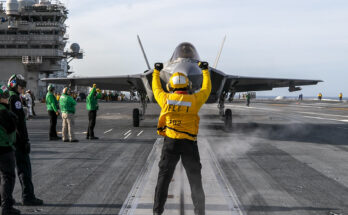by Shaun McDougall, Military Markets Analyst, Forecast International.
The U.S. Air Force is finally getting a new helicopter to replace its aging UH-1N Huey fleet. The venerable Huey will be replaced by the MH-139, a militarized version of the AW139, being built by a team of Boeing and Leonardo. The UH-1Ns primarily provide ballistic missile base security but also perform VIP transport and search-and-rescue operations.
The program is valued at $2.4 billion for up to 84 helicopters. The program cost “reflects the exercise of all options and provides for the acquisition and sustainment of up to 84 MH-139 helicopters, training devices and associated support equipment to replace the legacy UH-1Ns,” noted an Air Force statement.
The Air Force had originally outlined a program cost of around $4.1 billion, but Air Force Secretary Heather Wilson said that “strong competition” drove down the cost by $1.7 billion.
The initial contract award is for $375 million for the first four helicopters, and also includes the integration of non-developmental items to meet Air Force program requirements. The first four aircraft were bought using RDT&E funding. The remaining airframes will be funded through the Air Force’s procurement account. FY19 budget documents show that the Air Force plans to procure eight helicopters per year starting in FY20.
The MH-139 beat out Sikorsky’s HH-60U, as well as a refurbished UH-60L offering from Sierra Nevada Corp. The MH-139 victory is a bit of an upset for the Black Hawk. Shortly after releasing its FY17 budget request, the Air Force actually submitted a reprogramming request in support of a sole-source acquisition of Black Hawk helicopters in order to accelerate fielding by up to two years, but the proposal was denied by the Defense Department. The Air Force is also buying a new fleet of HH-60W Combat Rescue Helicopters to replace its Pave Hawk fleet, but the requirements for a CSAR aircraft are vastly different from those for one that will not be used in combat, as is the case with the MH-139.
The Air Force subsequently launched a formal competition, and released a Request for Proposals in July 2017. Sikorsky pre-emptively filed a protest in February 2018 due to concerns about the RFP, but the protest was denied by the Government Accountability Office (GAO). It remains to be seen if the selection decision will be protested as well.
The contract award is also another big win for Boeing, which was recently selected to build the Navy’s carrier-based MQ-25 Stingray unmanned tanker aircraft. The company is also in the running for the Air Force’s T-X trainer competition.
An earlier UH-1N replacement effort, known as the Common Vertical Lift Support Platform (CVLSP) program, was terminated in the FY13 budget due to a lack of funding. The Air Force had also previously considered buying retired Army UH-60A Black Hawks and upgrading them to the UH-60L configuration.
Edit on 9/28/2018: Boeing has continued its winning streak, winning the Air Force’s coveted T-X trainer competition.
As editor of International Military Markets, North America, Shaun has cultivated a deep understanding of the vast defense markets in the United States and Canada. Further, Shaun played an integral role in the development of Forecast International’s U.S. Defense Budget Forecast product, which offers an unprecedented level of insight into the Pentagon’s acquisition budget.
For 50 years, Forecast International intelligence reports have been the aerospace and defense industry standard for accurate research, analysis, and projections. Our experienced analysts compile, evaluate, and present accurate data for decision makers. FI's market research reports offer concise analysis of individual programs and identify market opportunities. Each report includes a program overview, detailed statistics, recent developments and a competitive analysis, culminating in production forecasts spanning 10 or 15 years. Let our market intelligence reports be a key part of reducing uncertainties and mastering your specific market and its growth potential. Find out more at www.forecastinternational.com




